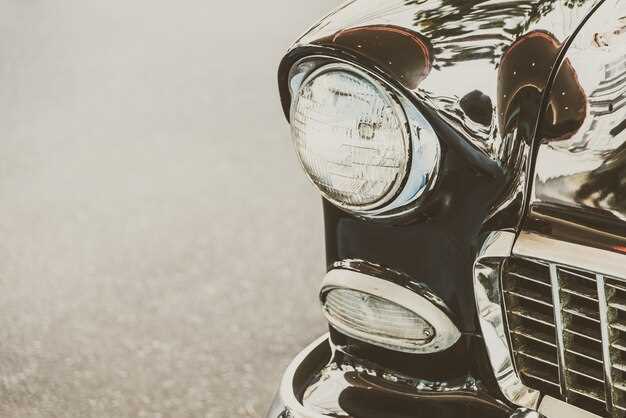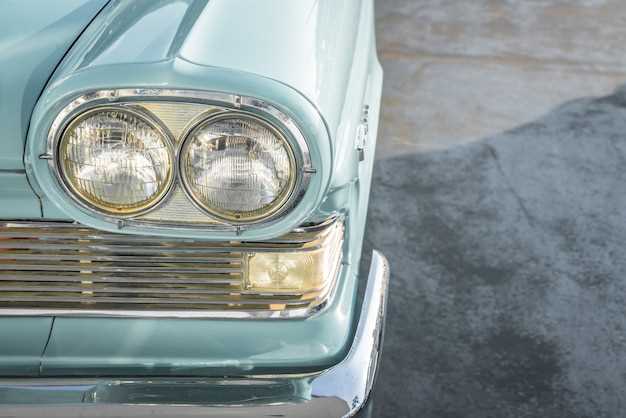
For automotive enthusiasts and collectors alike, the Porsche 911 holds a special place in the realm of classic cars. This iconic sports car has evolved over decades, embodying a perfect blend of performance, design, and engineering excellence. However, entering the world of classic 911 ownership requires careful consideration and knowledge. This guide aims to provide potential buyers with the essential factors that should influence their purchasing decisions.
As a buyer navigating the classic car market, understanding the nuances of the Porsche 911 is crucial. Each generation comes with its unique characteristics, strengths, and potential pitfalls. From the air-cooled engines of earlier models to the introduction of modern technology in later iterations, the history of the 911 is rich and diverse.
In this buyer’s guide, we will delve into key aspects such as authenticity, maintenance history, and market trends, ensuring that prospective enthusiasts are well-equipped to make informed decisions. Whether you seek a pristine restoration or a project car with character, being informed will help you appreciate the true value of a classic Porsche 911.
Buying a Classic Porsche 911: Key Factors to Consider
For any buyer considering the acquisition of a classic Porsche 911, several essential factors must be carefully evaluated to ensure a satisfactory purchase. The Porsche 911 is not merely a vehicle; it is a symbol of automotive engineering excellence and a piece of history. Understanding the nuances of various models, production years, and market dynamics is crucial.
Firstly, it is important to familiarize oneself with the different generations of the 911. Classic 911s, typically spanning from the early models of the 1960s to the end of the 993 generation in the mid-1990s, each offer distinct characteristics, performance features, and styling cues. The buyer should research specific model years and seek recommendations on the most reliable and desired variants.
Another vital consideration is the vehicle’s condition. It is advisable to inspect the car thoroughly for signs of rust, bodywork issues, and any mechanical deficiencies. A complete service history can significantly influence the value of the 911, as a well-documented maintenance record showcases the care the car has received over the years.
Additionally, potential buyers should focus on originality. Many classic 911s have been modified over the years, which may or may not enhance their appeal. Original, unmodified vehicles tend to hold their value better in the long run, while modifications can sometimes detract from resale potential, depending on the nature of the changes made.
Engaging in a thorough market research is also crucial. Awareness of current market trends, pricing fluctuations, and auction results can provide valuable insights into a fair price for the specific model of interest. Buyers should also consider connecting with Porsche enthusiast communities, forums, and clubs that can offer support, resources, and recommendations.
Finally, it is wise to evaluate long-term maintenance and ownership costs. Classic 911s can incur significant expenses for upkeep, parts replacement, and insurance. Potential buyers should factor these costs into their budget to ensure a fulfilling ownership experience.
By considering these key factors–model knowledge, vehicle condition, originality, market trends, and ownership expenses–buyers can navigate the journey of acquiring a classic Porsche 911 with confidence and clarity.
Assessing the Model Year and Specifications

When considering a classic Porsche 911, understanding the model year and its specific specifications is crucial. Each iteration of the 911 has its own unique characteristics, performance attributes, and design changes that can significantly affect both driving experience and value. Therefore, it’s essential to consult a reliable guide that outlines these differences.
The Porsche 911 models span several decades, with notable generations such as the original 1964-1989 models, the 964 (1989-1994), the 993 (1995-1998), and the more modern 996, 997, and beyond. Early models are often sought after for their puristic driving experience and mechanics, whereas later models may offer enhancements in technology, comfort, and performance.
One must evaluate various factors including the engine type, horsepower, and weight distribution, which evolved over time. For instance, models post-2000 typically feature water-cooled engines, while earlier variants maintain the air-cooled legacy that enthusiasts cherish.
Additionally, specific options, such as the presence of a Turbo model or special editions like the RSR or Targa, can elevate the desirability and potentially the resale value of your purchase. Factors like restoration history, mileage, and maintenance records are also important to consider when assessing a classic 911.
Comparing performance specifications, such as 0-60 times and braking capabilities, can provide insight into how each model year stands up against contemporary sports cars. For collectors, understanding the production numbers and market demand for particular years can influence investment potential.
In summary, a thorough assessment of the model year and technical specifications is vital when buying a classic Porsche 911. This analysis not only guides your purchasing decision but also helps in selecting a model that aligns with your driving preferences and restoration plans.
Evaluating Condition and Maintenance History
When purchasing a classic Porsche 911, assessing its condition and maintenance history is crucial for any buyer. This guide will help you identify key factors to focus on during your evaluation.
Start by examining the overall condition of the vehicle:
- Exterior: Look for rust, dents, and paint inconsistencies. Pay close attention to the undercarriage and areas around the wheel wells.
- Interior: Inspect the seats, dashboard, and controls for wear and tear. Original parts can enhance the car’s value, so verify authenticity.
- Mechanical Components: Check the engine, transmission, and brakes for leaks, unusual noises, or signs of poor upkeep.
Next, review the maintenance history:
- Service Records: Obtain as many records as possible, including receipts for services, repairs, and parts replacements. Consistent maintenance is a positive indicator.
- Ownership History: Knowing how many previous owners the car had can provide insights into its treatment and maintenance frequency.
- Specialist Care: Determine whether the vehicle has been serviced by professionals who specialize in classic Porsches. This may ensure appropriate care and preservation.
Finally, consider obtaining a pre-purchase inspection from a qualified mechanic. This can uncover hidden issues and provide peace of mind.
By carefully evaluating the condition and maintenance history, you will be empowered as a buyer to make an informed decision regarding your classic Porsche 911 purchase.
Understanding Market Value and Price Negotiation

When considering the purchase of a classic Porsche 911, understanding the market value is crucial for any buyer. The price of these iconic sports cars can vary significantly based on several factors, such as model year, condition, mileage, and provenance. A thorough guide should include a comprehensive analysis of current market trends, which can be found in classic car sales reports and enthusiast forums. By examining recent sales, prospective buyers can gauge reasonable price expectations.
Market value is not static; it fluctuates based on demand and rarity. Limited edition models or those with unique features often command higher prices. Buyers should familiarize themselves with specific model histories to identify which variations hold the most value. Furthermore, consulting professional appraisers or reputable dealers can provide additional insights into fair pricing, ensuring a well-informed purchase decision.
Price negotiation is another critical component when acquiring a Porsche 911. Once a potential buyer has established a solid understanding of the market value, the next step is to approach negotiations confidently. Being prepared with comparable sales data and knowledge of the car’s condition will empower buyers during price discussions. It’s essential to start negotiations below the desired price point to allow room for compromise. Buyers should remain flexible and open, but also know their limits, and be prepared to walk away if the terms do not reflect the market value.
Ultimately, a well-researched buyer will likely secure a classic Porsche 911 at a fair price, striking a balance between desire and financial sensibility. Understanding current market dynamics and employing effective negotiation strategies are key steps in this rewarding purchasing journey.
 Skip to content
Skip to content




